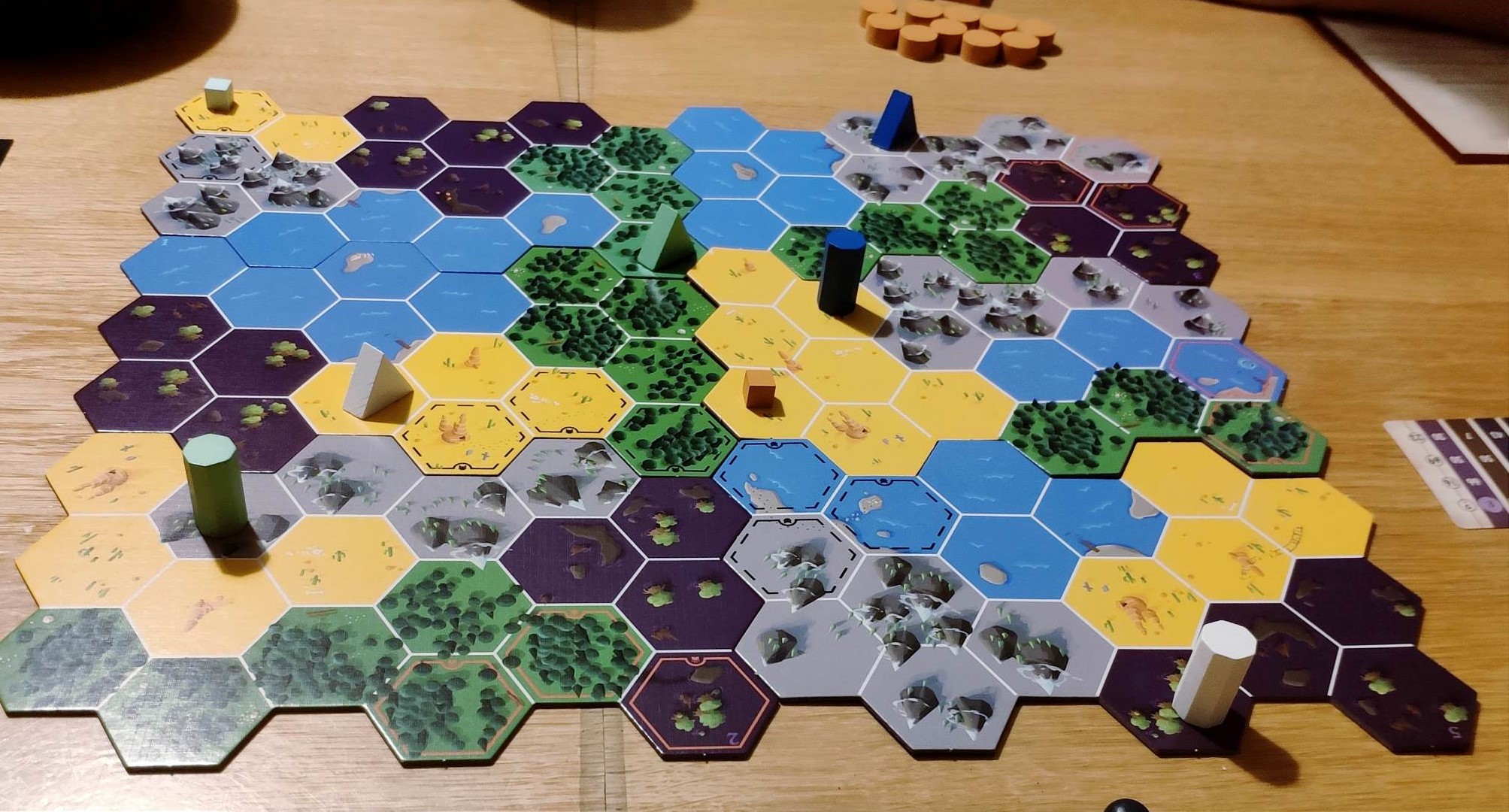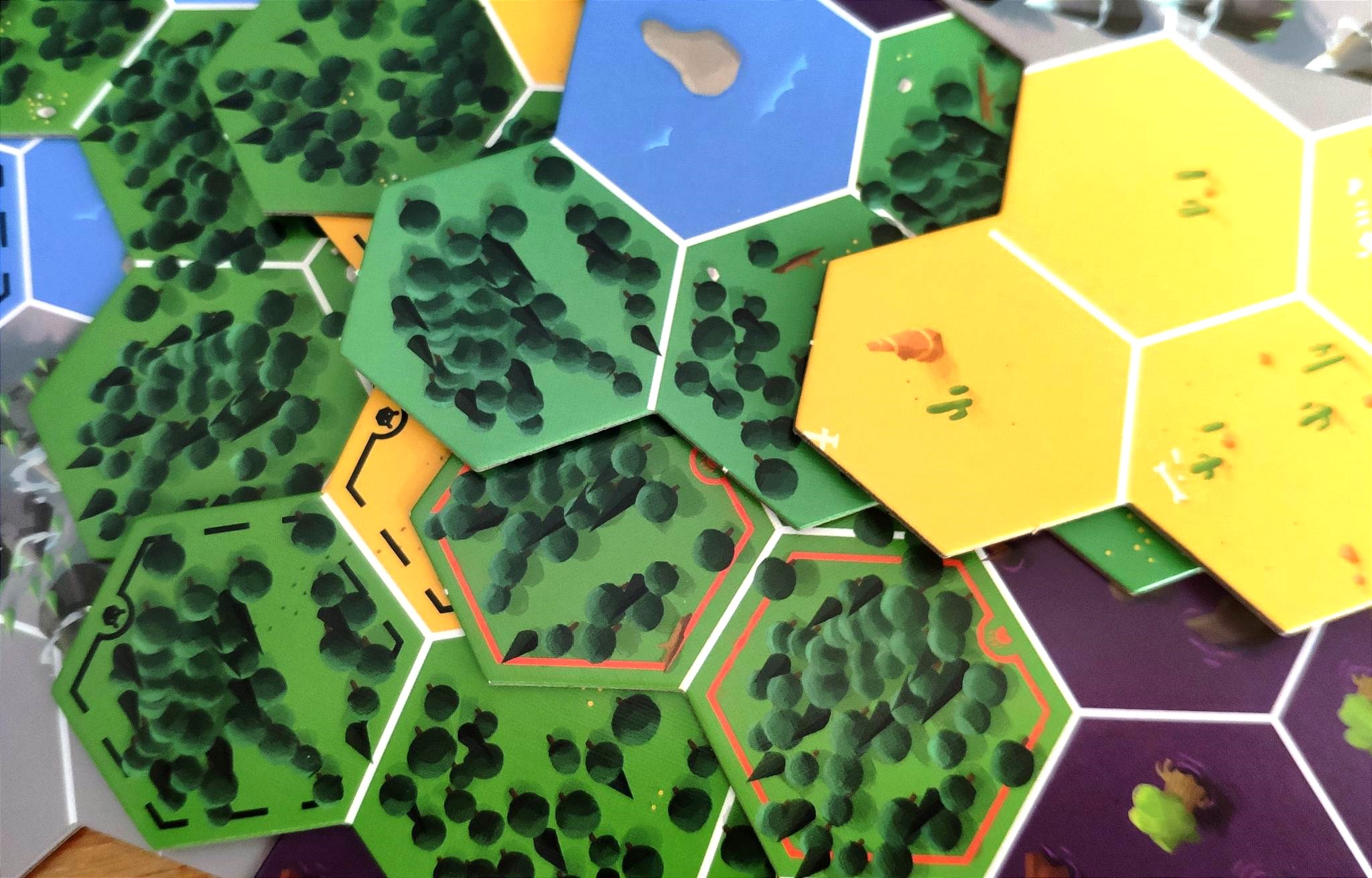A mysterious creature is hiding somewhere in the wild, and our goal is to find its lair before the others do. Each player has only one clue, which he does not want to reveal to the others. The problem is that this is not enough to find the lair – its location must meet the conditions of each player’s clues. We have to skillfully ask questions and combine facts so that, using the answers of others, we can deduce where the hiding place of the title cryptid is.
When unfolding the game, we choose one of the 54 cards that determines the layout of the board and assigns clues to the players. The game area is divided into hexes that define the type of environment (forests, mountains, water bodies, etc.), there are boulders, abandoned camps and ranges of occurrence of bears and pumas. One of the fields contains a cryptid lair.

Each player is given a manual with clues, and the scenario card determines which clue will be used in each game. Lair location hints are in the form of “within a given range of a given type of hex” or, in the advanced variant, “not in a given hex type”. We can also use the scenario generated by the website, but then the instructions will not be available in Polish. We look at the board and have only a vague idea of where to look for the creature.
Each player in his turn chooses one space on the board and asks a question to the selected opponent: according to his clues, the cryptid may be in this place? The answer is marked with a dice (if not) or a disc (possibly yes) in the color of the questioned player. After a few rounds, we can read certain relationships from the arrangement of markers on the board. When we want to verify the developed theories, we can perform the second type of action on our turn – search. We select a field and say that we think there may be a cryptid in this place. If all the other players agree with us, we win.

Playing Cryptid resembles a logical puzzle in which, as a result of a series of questions and answers, we get successive pieces of the puzzle. On our turn, we must carefully choose which field to ask which player to get as much information as possible without revealing our plan. For the gameplay to be satisfying, we need to play Cryptid at least a few times. Once we are comfortable navigating the different types of cues and knowing what to expect, our movements will become more coordinated and meaningful. An undoubted advantage is that knowing the rules well, we will finish the game in 15-25 minutes. I will add that Cryptidit works very well in a larger group (4, 5 people) – then we have more possibilities for scheming and deduction. The game for 2 people is interesting, although given the choice, I would rather play a title dedicated to two.
Unfortunately, I have a few comments about the performance of the game. The boards are cut out of too thin cardboard – they bend and stick out when lying on the table. In my copy, one of the boards has a fairly shifted print, and the next one differs from the rest in color. It doesn’t affect gameplay, but it’s a bit annoying. The second thing is the number of components for players. In three-player games, it happened that someone ran out of cubes to mark the answers. The manual advises in such situations to use other, arbitrary markers, but in practice it is quite difficult to quickly arrange those that would match the color (which is crucial for the game). 5-10 extra cubes per player or cardboard replacements would solve this problem.

After playing Cryptid, I always felt a bit unsatisfied – the level of deduction and game time do not allow me to dive deep into the theory, and the rules do not give room for bluffing, hiding information or very cunning tricks. In addition, despite the many available board layouts, we will not see a change in the formula here – each subsequent game looks very similar.
Cryptid will work as a nice warm-up exercise. We’ll mess around a bit, think and after half an hour we can play something else. If we want to play with an extensive element of deduction – there are titles on the market that will work better.

